PUBLISHED:2014-01-23 -lamula.pe
Just four days after learning the ruling of the Court International Court of Justice in The Hague on the lawsuit presented by Peru to define the maritime border with Chile, the attitudes of the authorities of both countries seem to reflect what would be a positive ruling for Peru, although right now it is impossible to define to what extent. The president of the Peruvian Institute of Law of the Sea, Miguel Ángel Rodríguez, has worked on multiple scenarios of a possible ruling based on legal speculation, with the premise that the Court will assume the delimitation from "Punto Concordia".
Here are the alternatives:
1) The ruling totally favors Peru.
The Hague would accept the Peruvian proposal to draw an equidistant median line from "Punto Concordia". In other words, it grants the totality of the 38,554 thousand km2 of the disputed triangle to Peru and also grants it the title of the external triangle of approximately 28 thousand km2.
"It is unlikely that the Court will rule in this regard because it grants Peru one hundred percent of its claim. It grants it the triangle of the controversy, in addition to the recognition of the title over the external triangle", says the president of the Peruvian Institute of Law of the Sea.
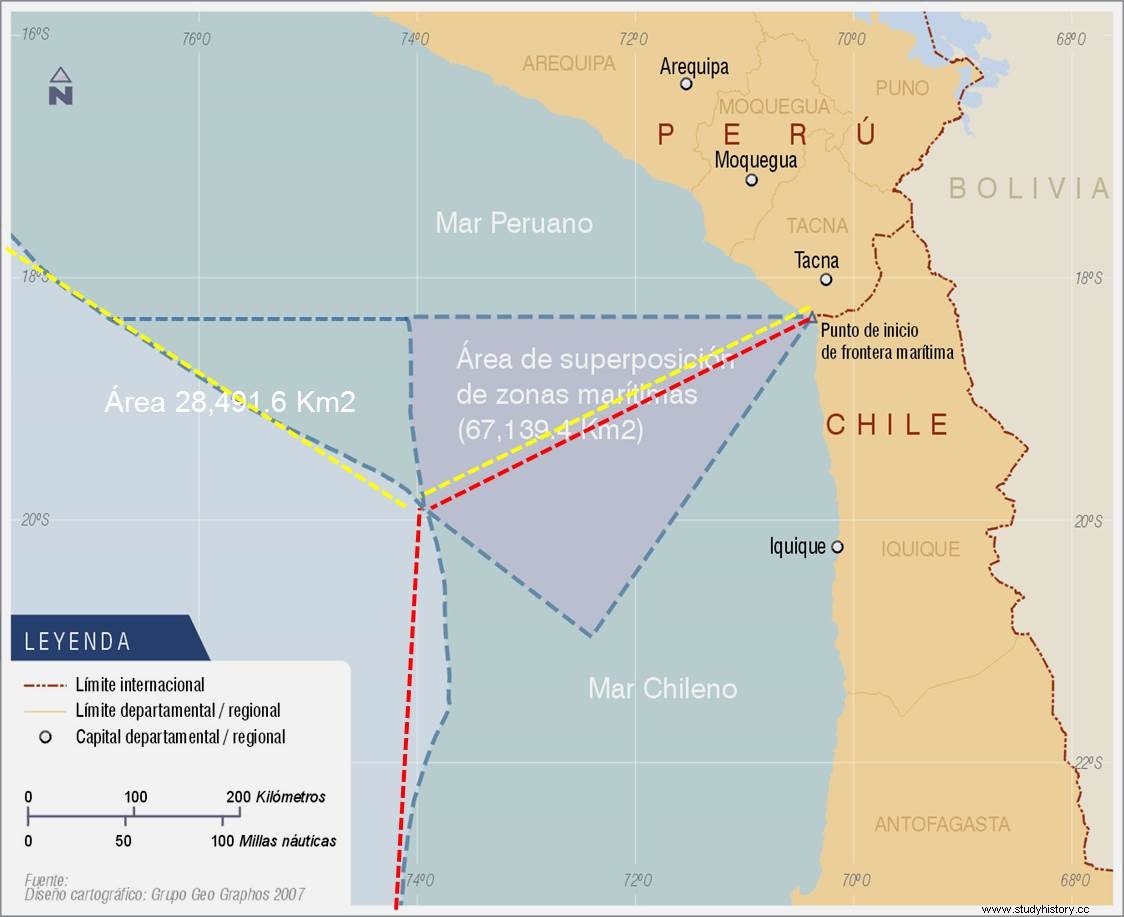
2) The ruling recognizes 12 miles parallel to Chile.
The Court, always starting from "Punto Concordia" draws twelve miles of parallel based on the Declaration on the Maritime Zone of 1952, signed between Peru, Chile and Ecuador.
Although the aforementioned agreement mentions the application of the parallel when referring to the conditionality of the presence of islands, which occurs between Peru and Ecuador, Rodríguez explains that the Court could adopt this solution because the 1954 Agreement also establishes a special zone from 12 miles with a line drawn in parallel. In addition, it adds that the concept of parallel line is also included in different minutes, which could incline the Court to recognize this concept to Chile.
"The Court would accept this thesis and would give Chile twelve miles with a in parallel, and immediately it would draw the median or equidistance line requested by Peru, with which it would be combining the legal nature that there was indeed a parallel and Chile is respected, but also the concept of equity that Peru claims is founded. ".
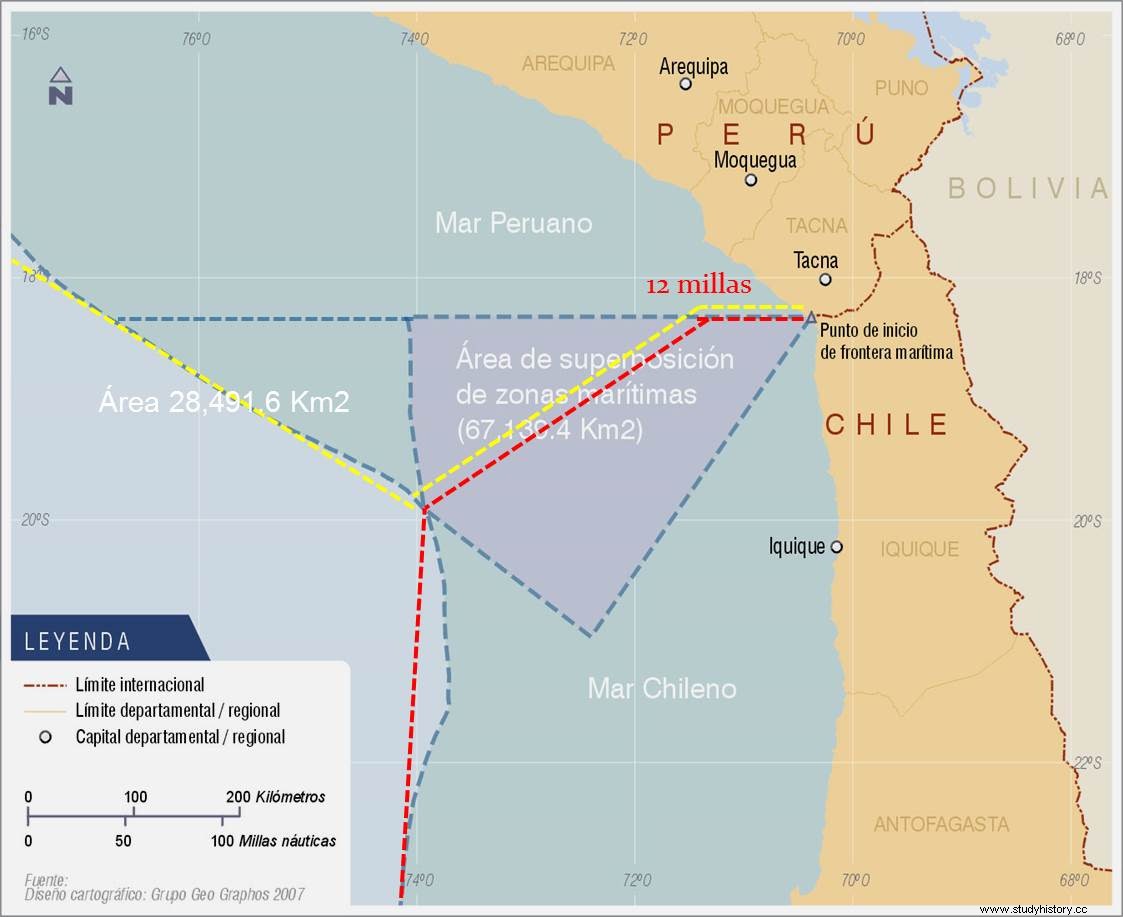
3) The ruling grants Peru 12 miles of equidistance
The president of the Peruvian Institute for the Law of the Sea affirms that the chances are high that the Court will adopt this ruling. "The Court has in all its actions the creative act as a source of international law. The Court creates a solution based on the requests made by the parties." Rodríguez explains that the Court can consider the concept of equity from the "Point Concordia" and draw a median line of equidistance in the first twelve miles, and then draw the parallel line under the partiality of the own acts (legal jargon that refers to the fact that the concept of the parallel line exists in various Peruvian regulations, for both should not be ignored).
"This would be a quasi-victory for Peru because we would have a middle line, but Chile would keep its coast and the largest proportion of the area in dispute."
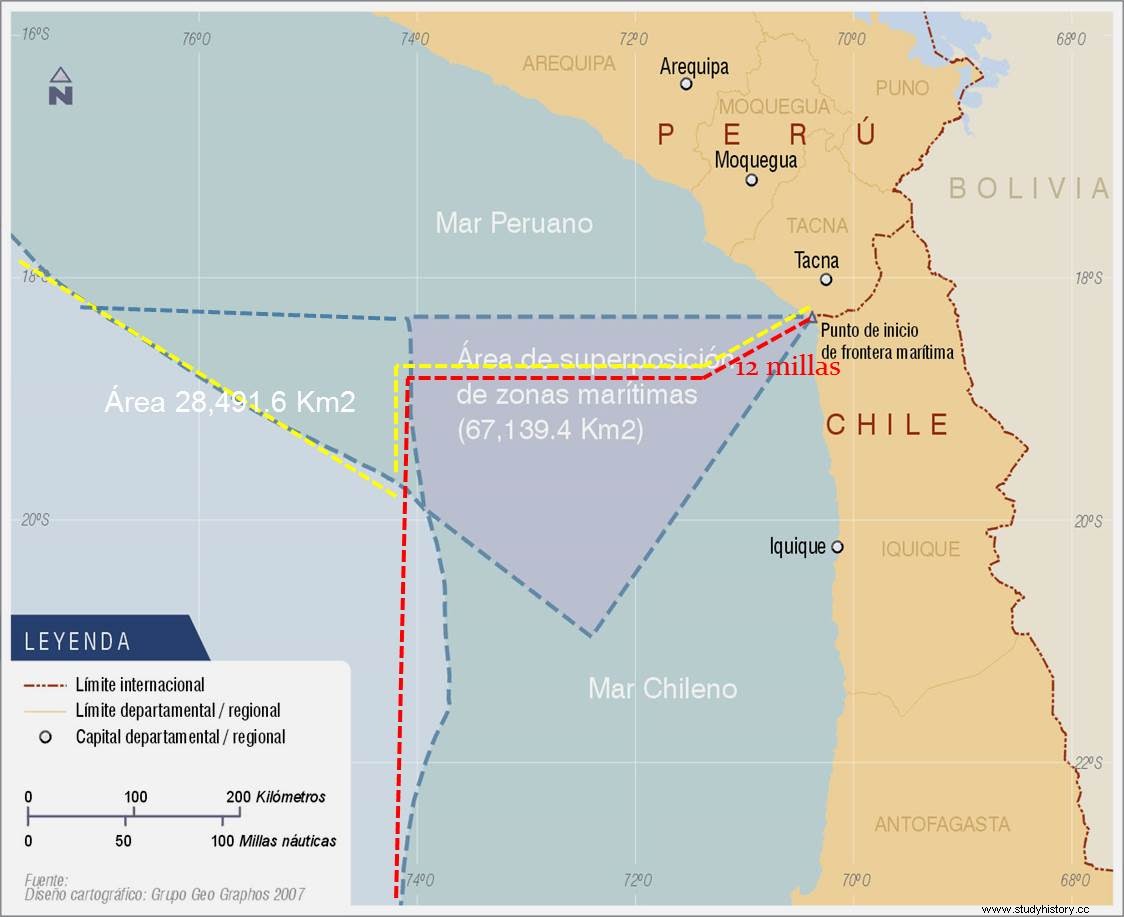
4) The ruling totally favors the Chilean position
The scene of defeat. The Court considers the entire theory of own acts that Chile argues, and interprets that the 1952 Declaration and the 1954 Agreement do establish maritime limits, and therefore, things continue exactly as they are until now." In this scenario of the same In this way, Peru is granted the title of the external triangle over which our country has not requested recognition of possession, but recognition of the title", explains Rodríguez.
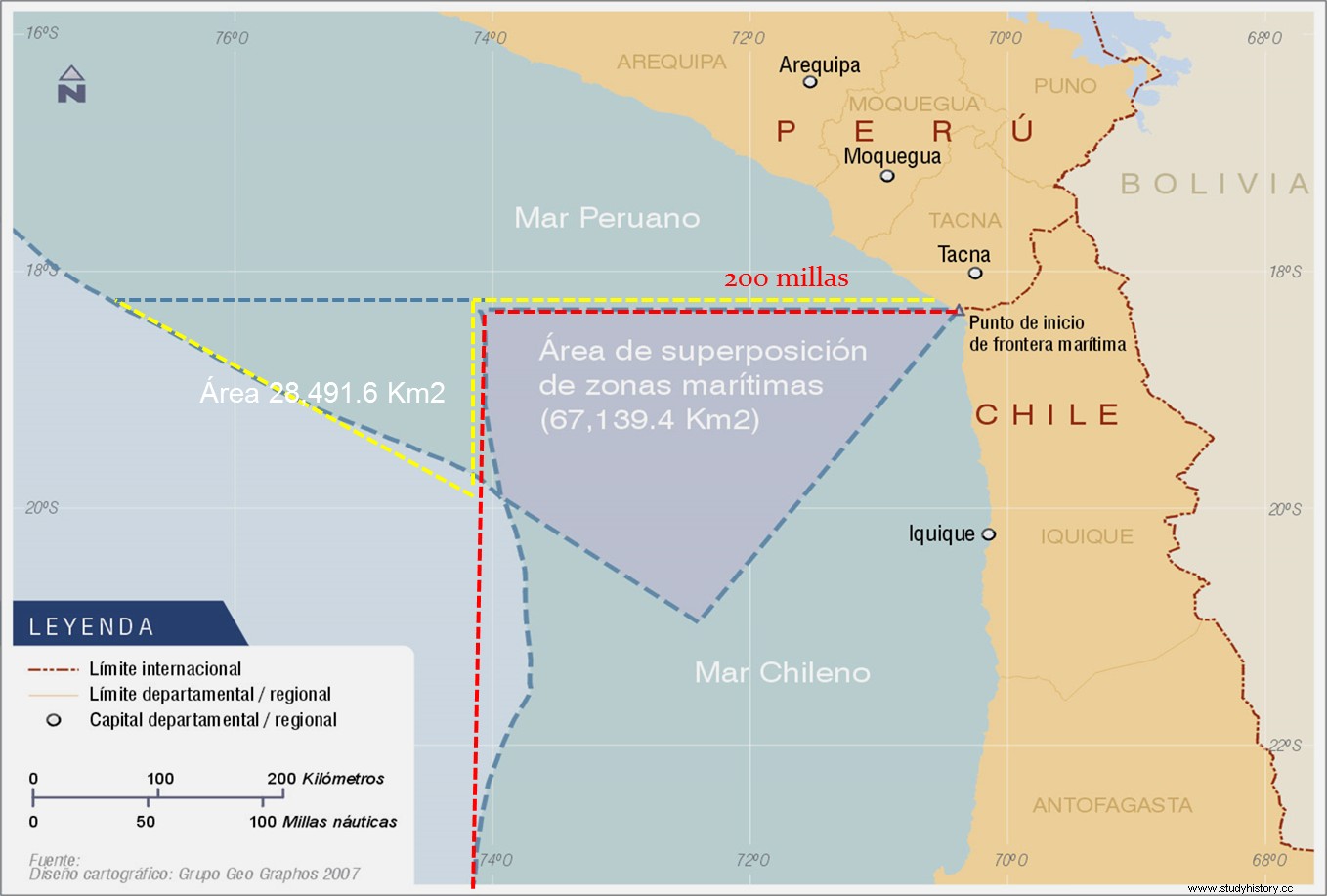
There are three additional possibilities that the Court could adopt, although with a smaller margin of possibilities to appear in the ruling.
5) The combined ruling.
The Court decides to combine the positions of both countries. A 12-mile parallel line is applied from "Punto Concordia" and then special 10-mile penetration zones are established for each country. First for Chile and then for Peru, based on "article 1 of the 1954 Agreement that establishes a special zone from mile 12; 10 miles on each side of the parallel," Rodríguez details. "In this case the status quo is maintained and it is undoubtedly a victory for Chile because we did not win anything. But that the Court rules in this way is very unlikely."
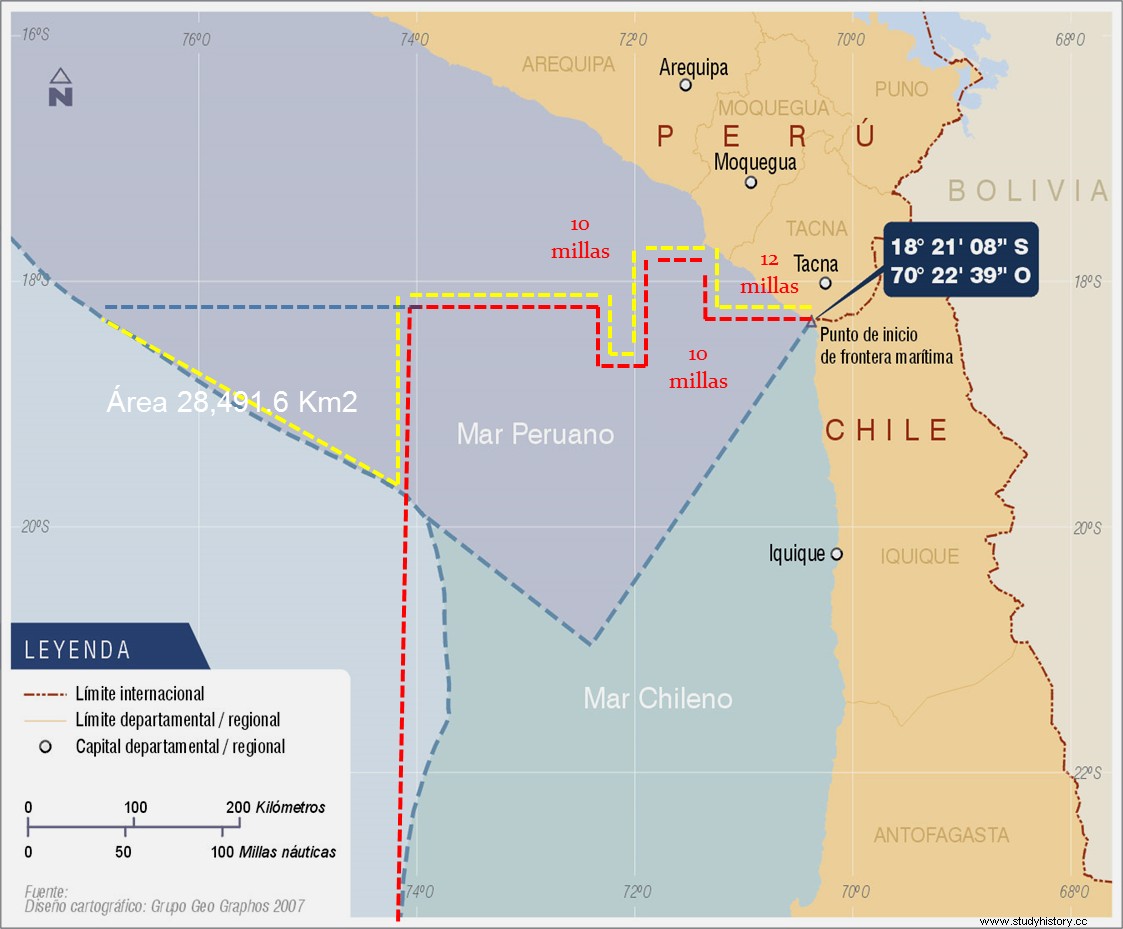
Second possibility within this same failure only in this case the penetration of the first 10 miles granted to Peru.
6) The Judgment combined with an equidistant median line
The Court considers the 1952 Declaration and the 1954 Agreement and establishes the same 12 miles and the area of mutual penetration for each country of 10 miles. But then it establishes a median line, with which Peru obtains a marginal proportion of the disputed maritime zone.
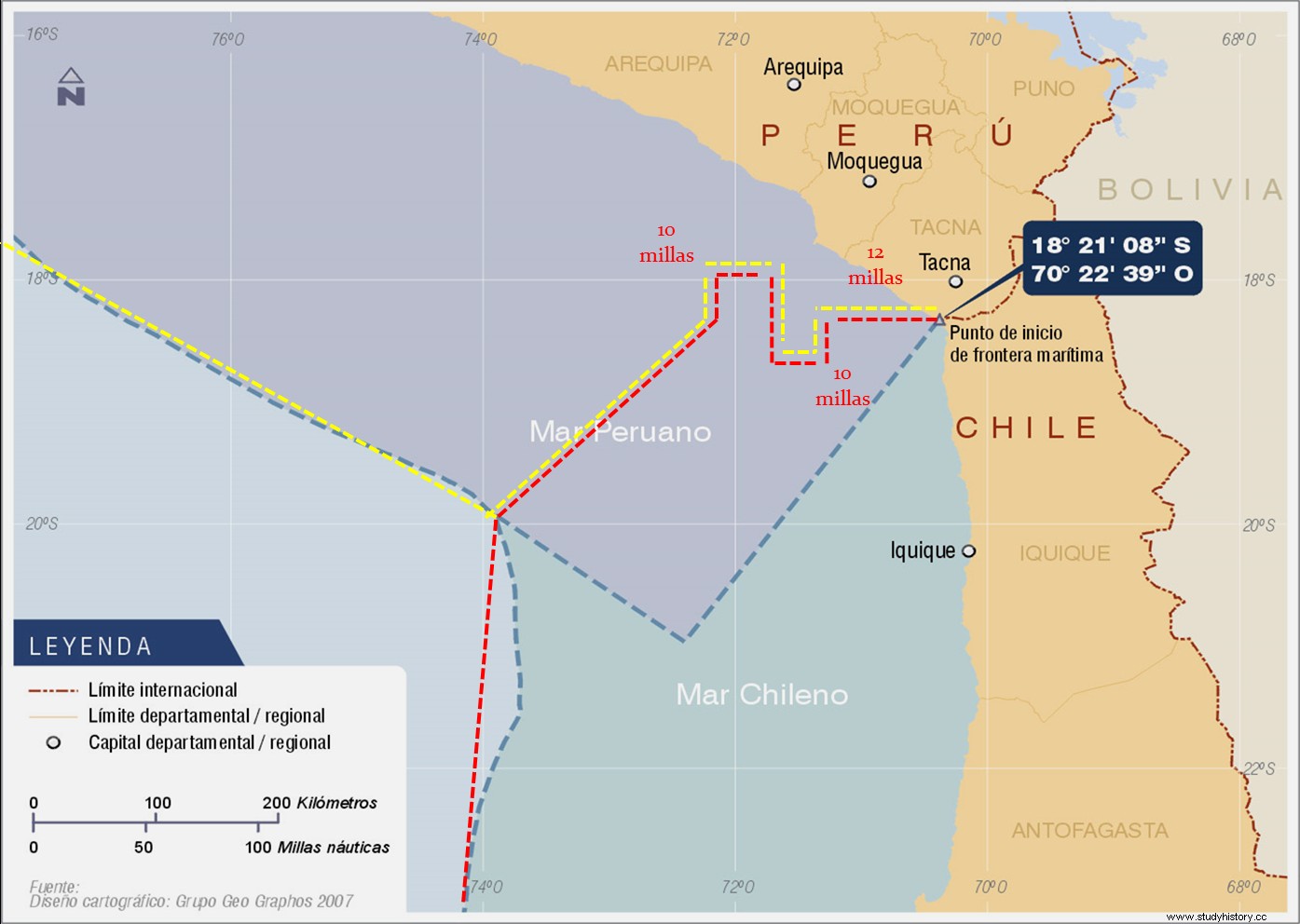
With just a few days to go before the Hague ruling, the political climate is heated in both countries. According to Chile, whatever the result of the Judgment, a "gradual execution" will be carried out. From the statements made by the President of Chile, Sebastián Piñera, it can be deduced that once the ruling is given, if it is contrary to that country, there is a desire to delay its implementation.
